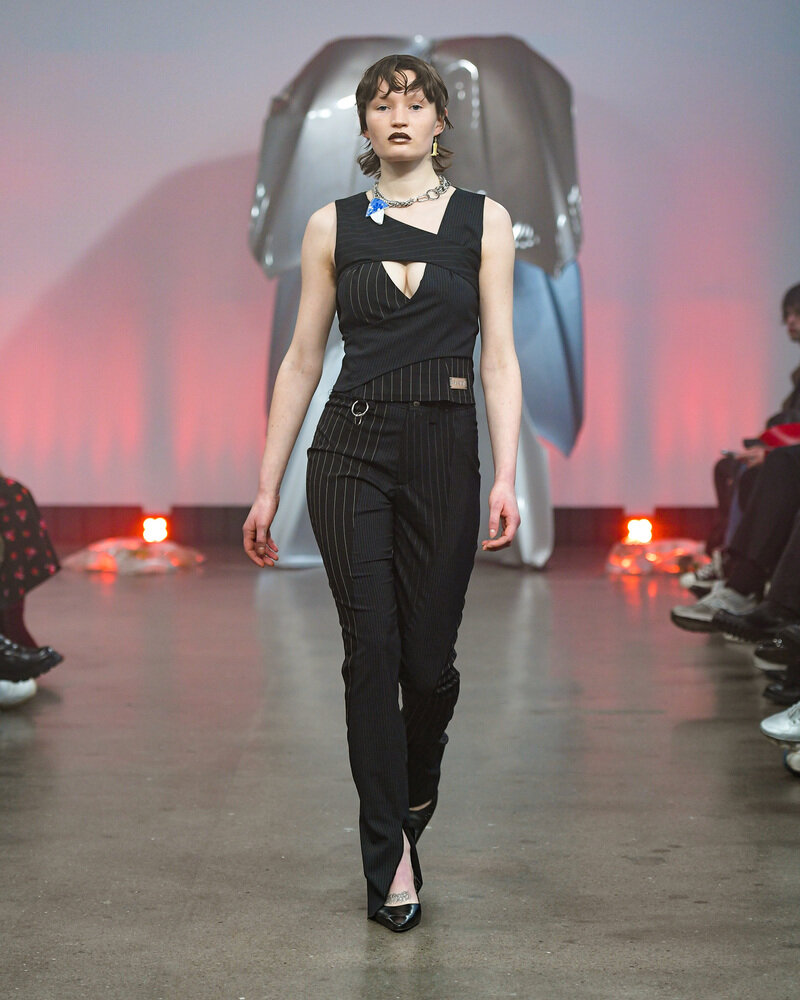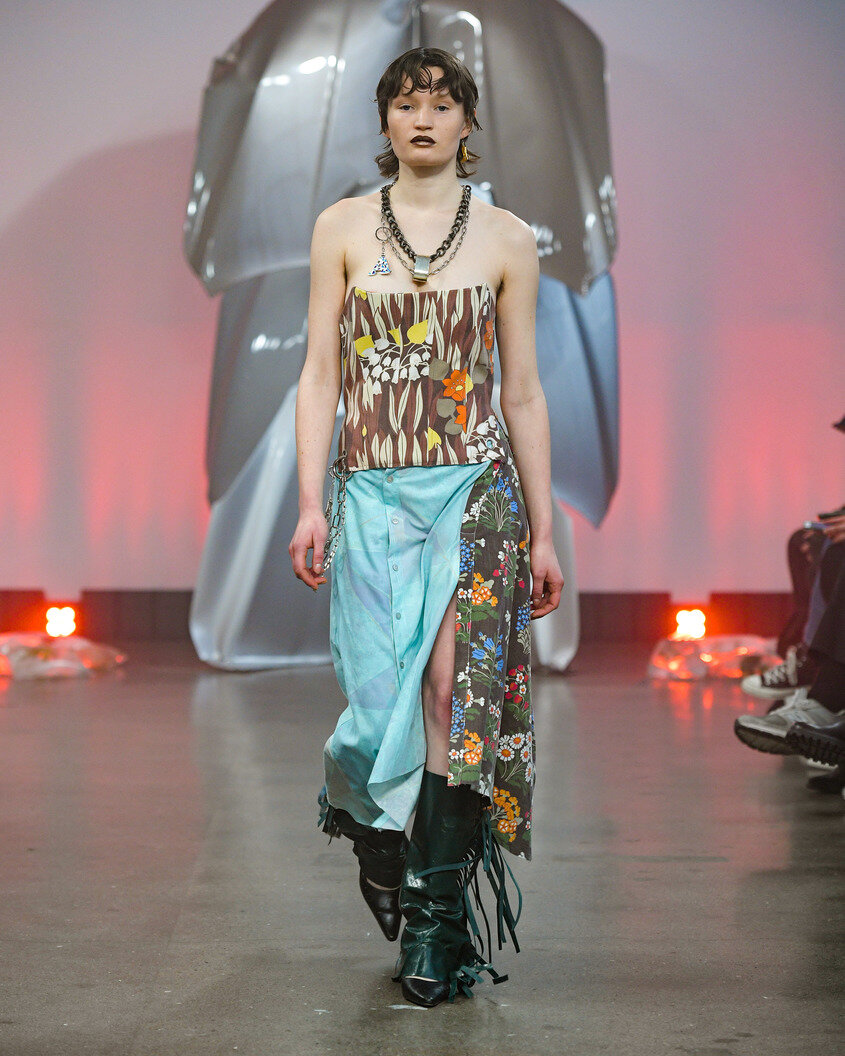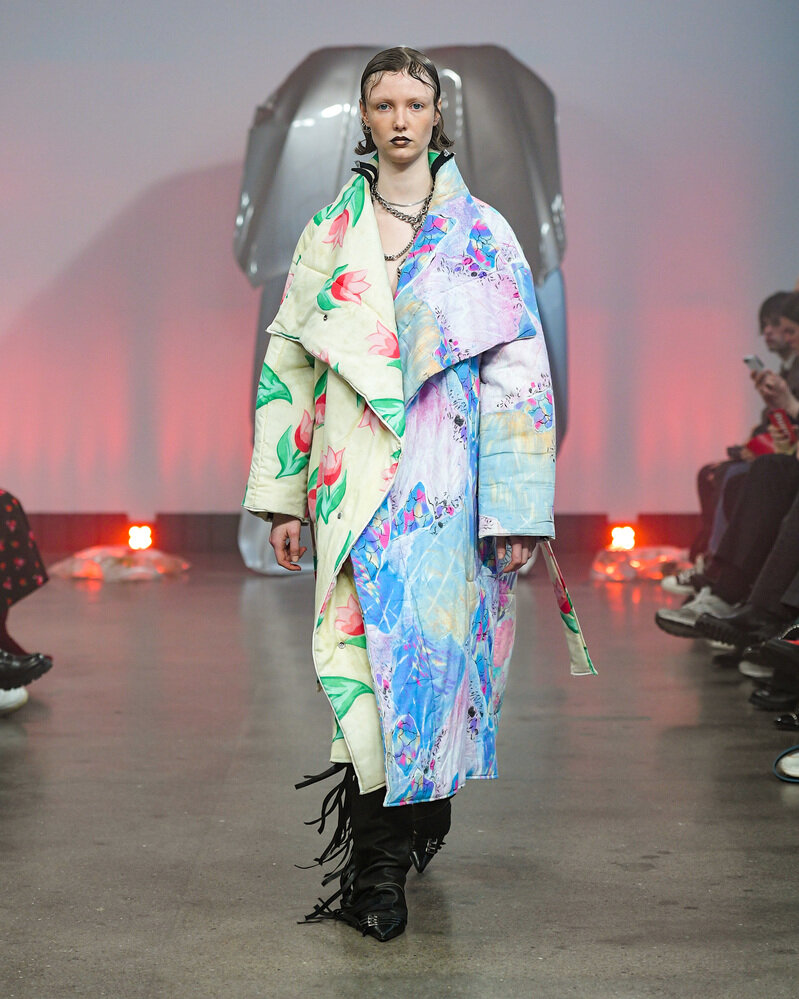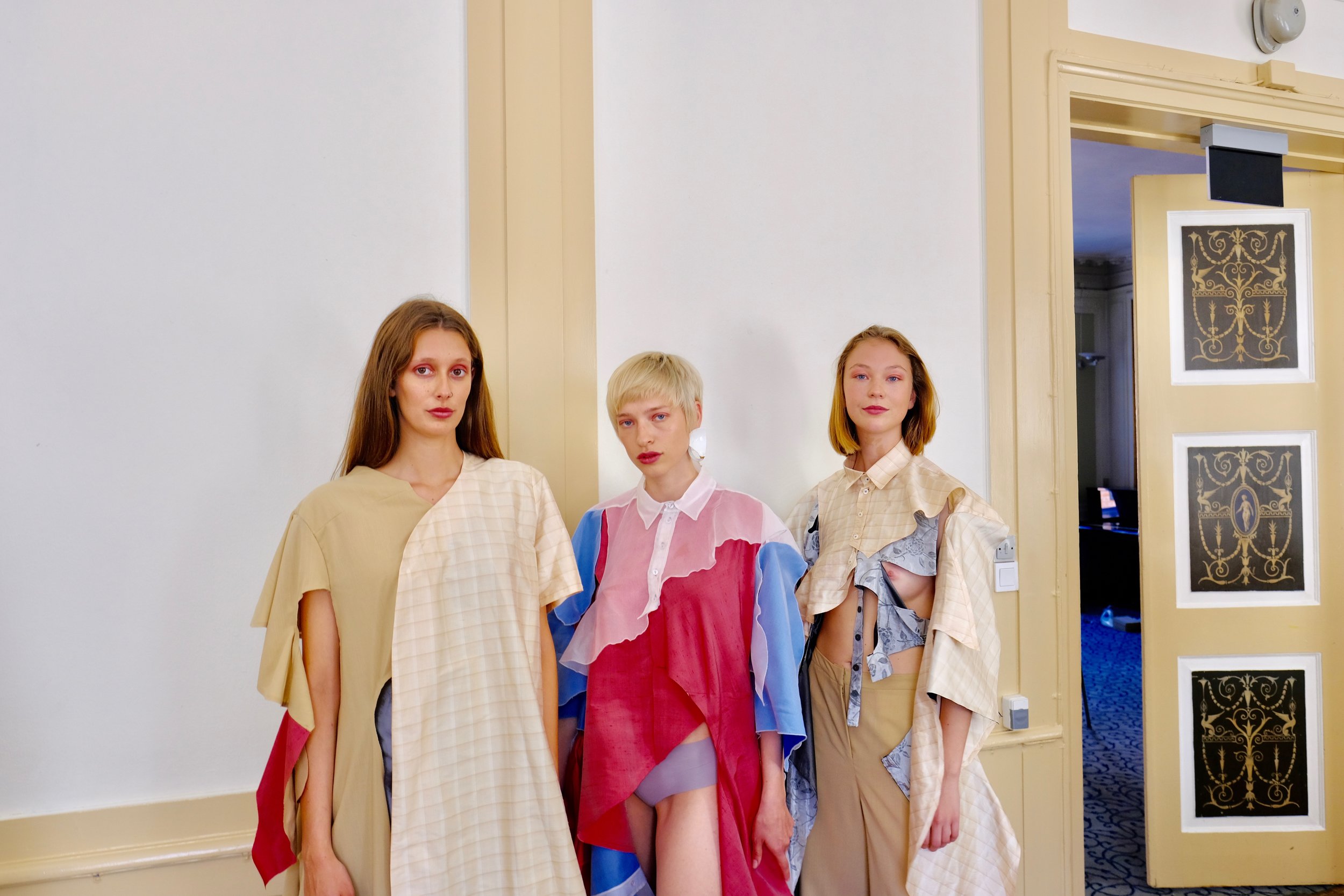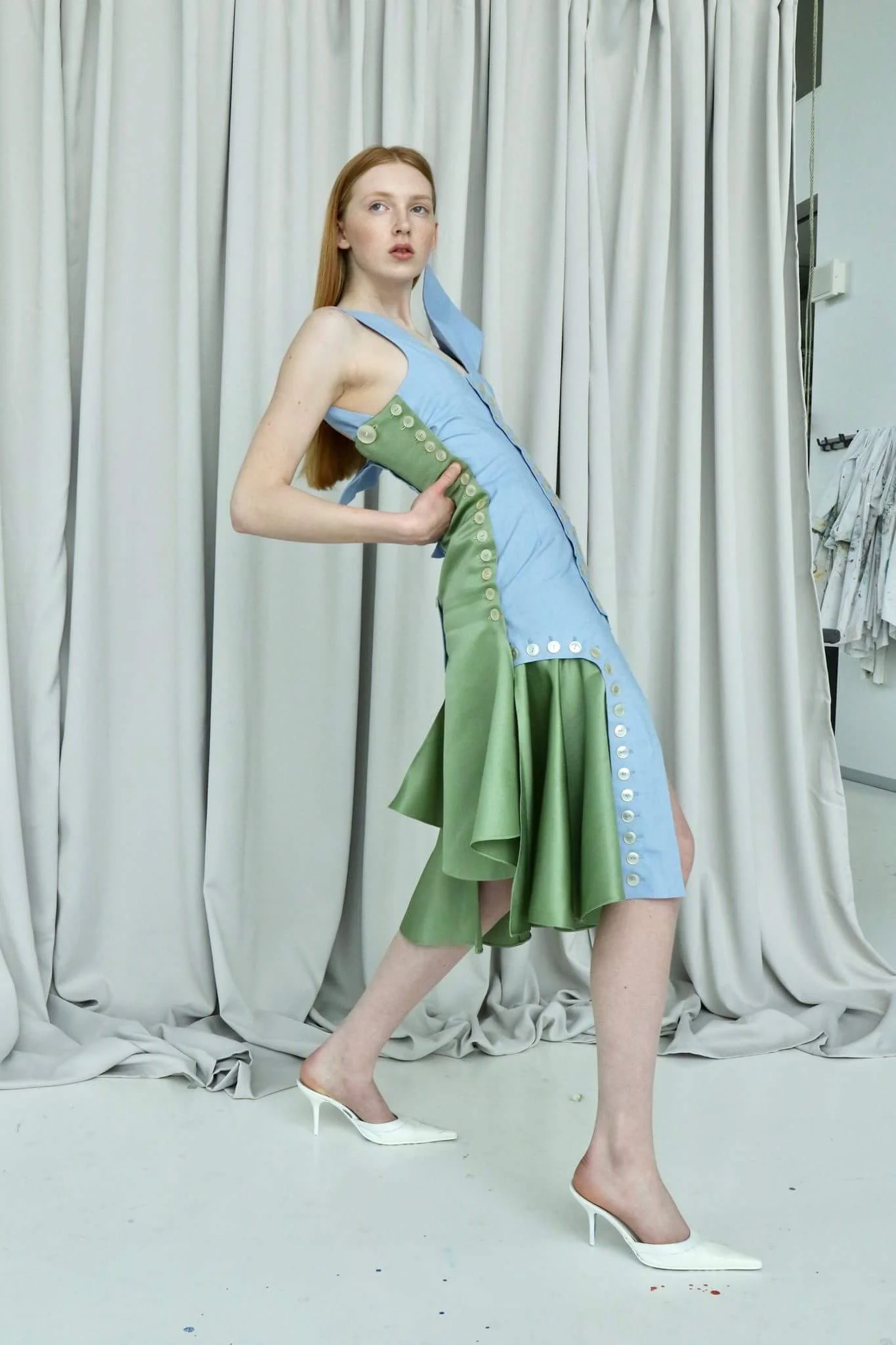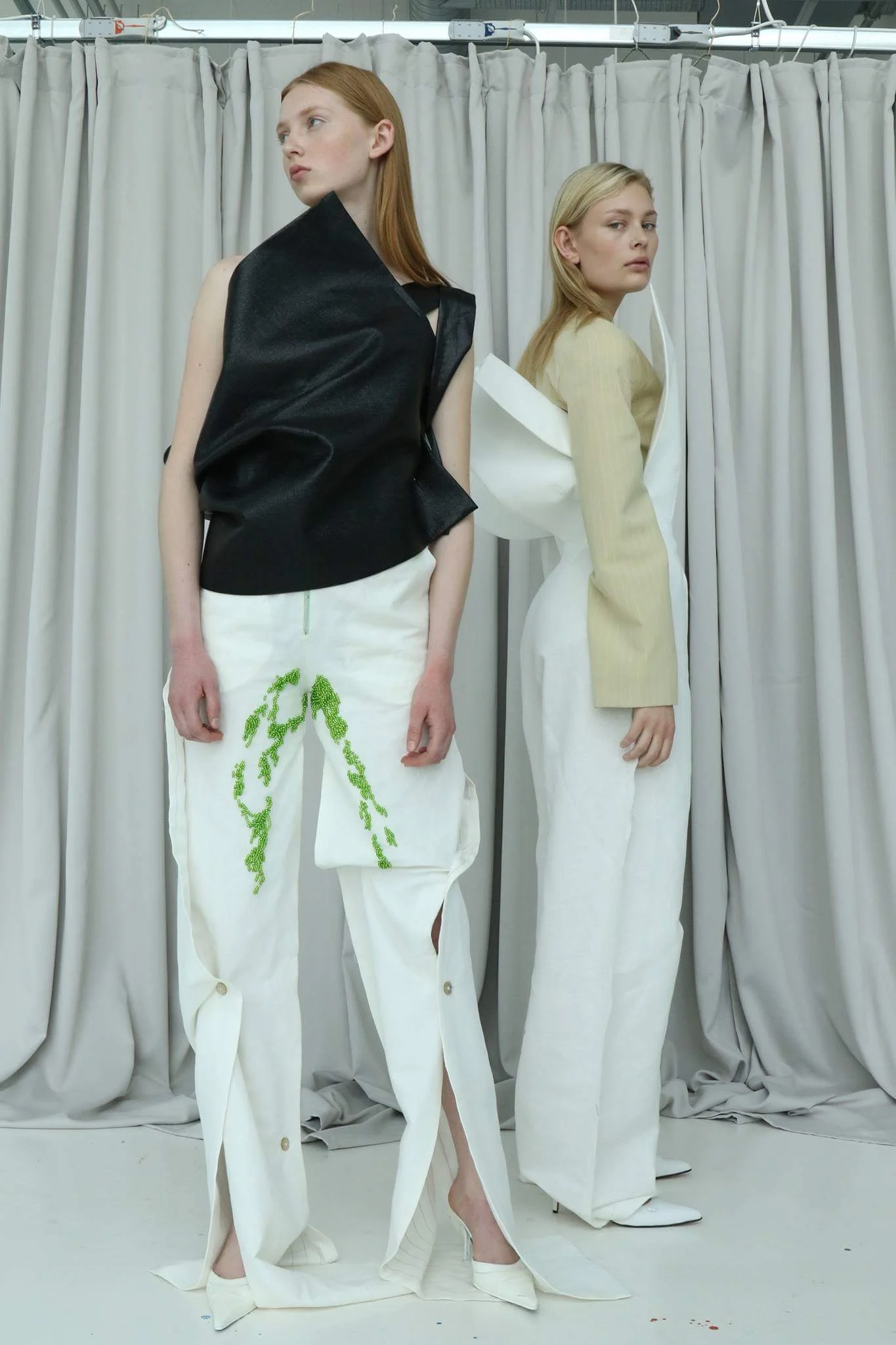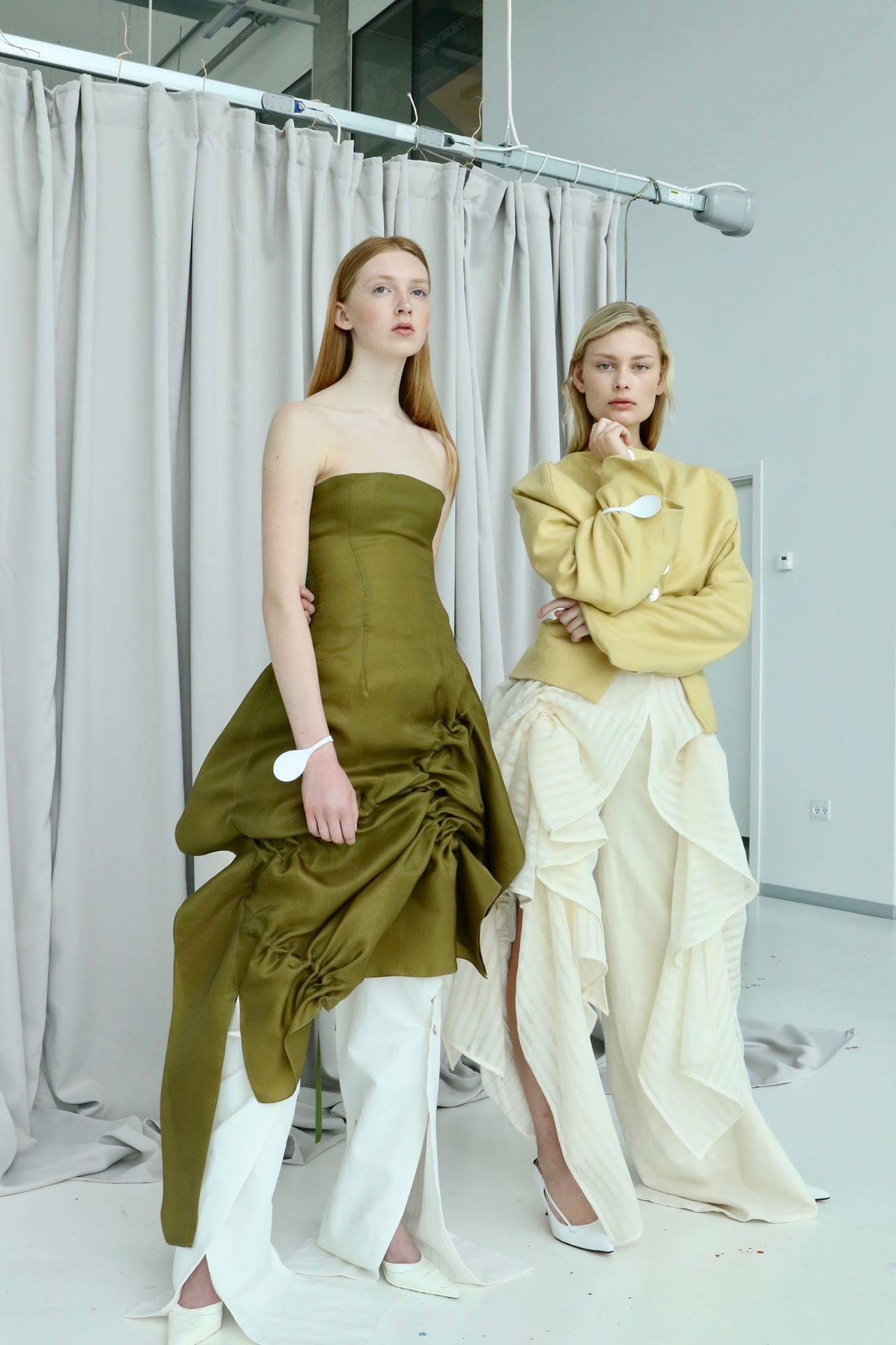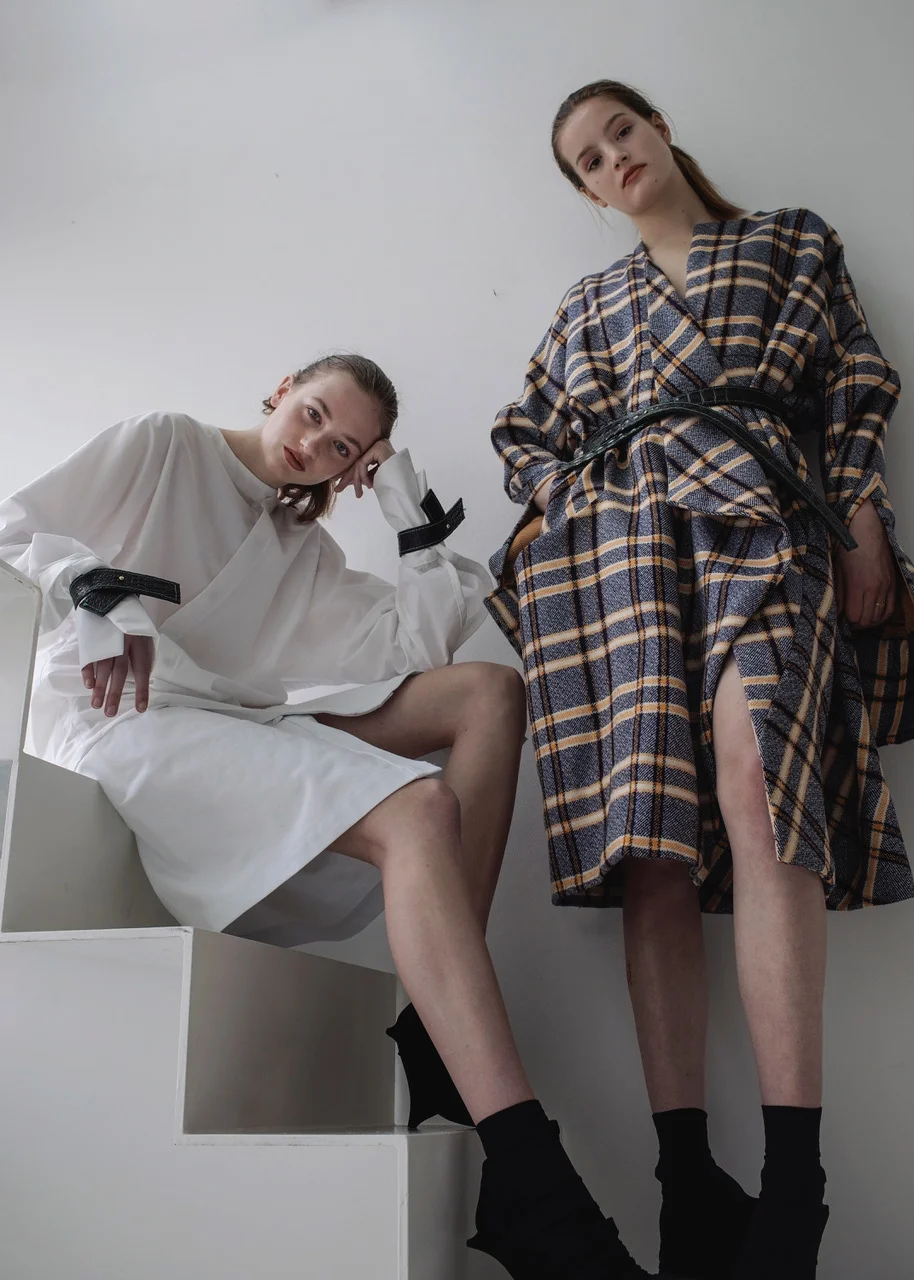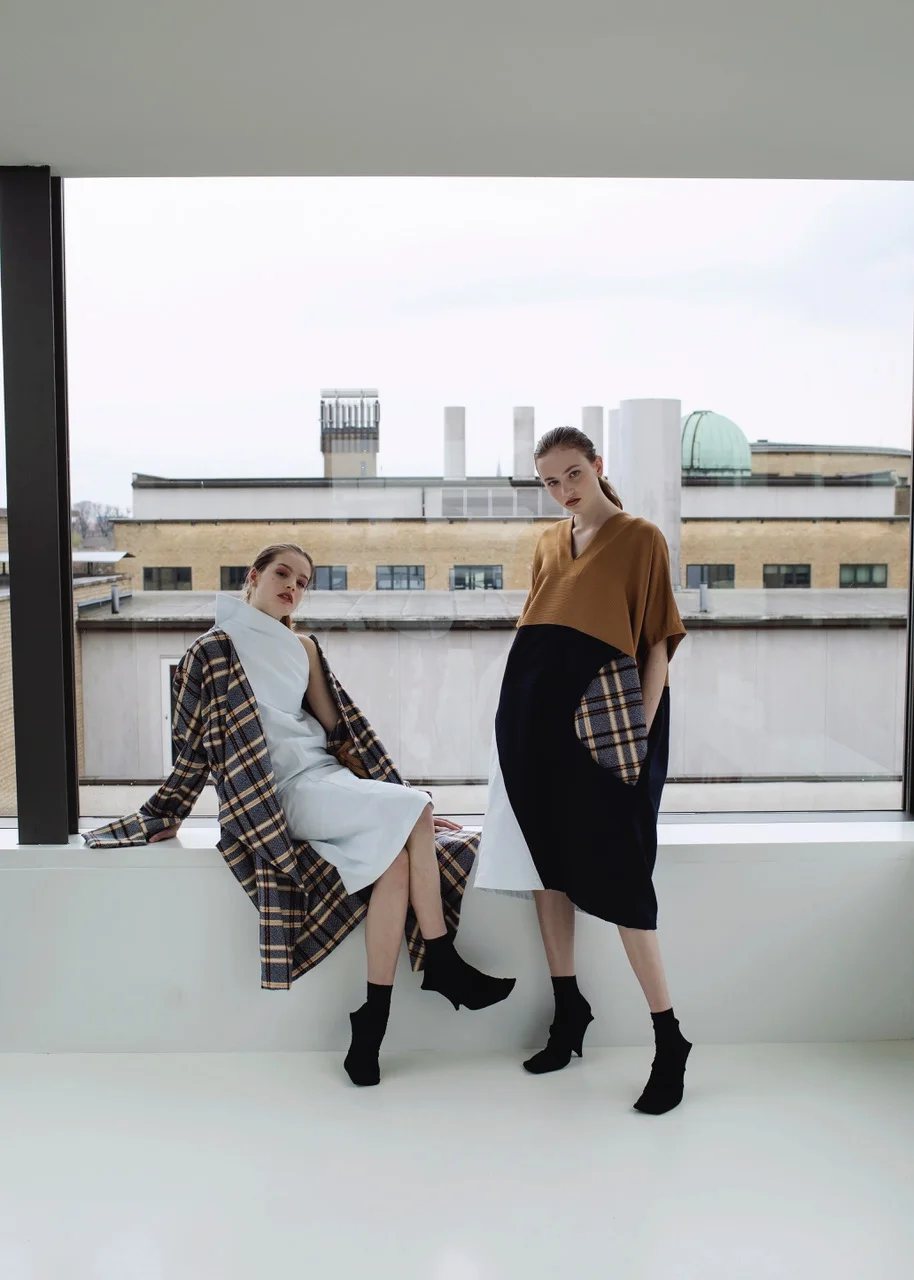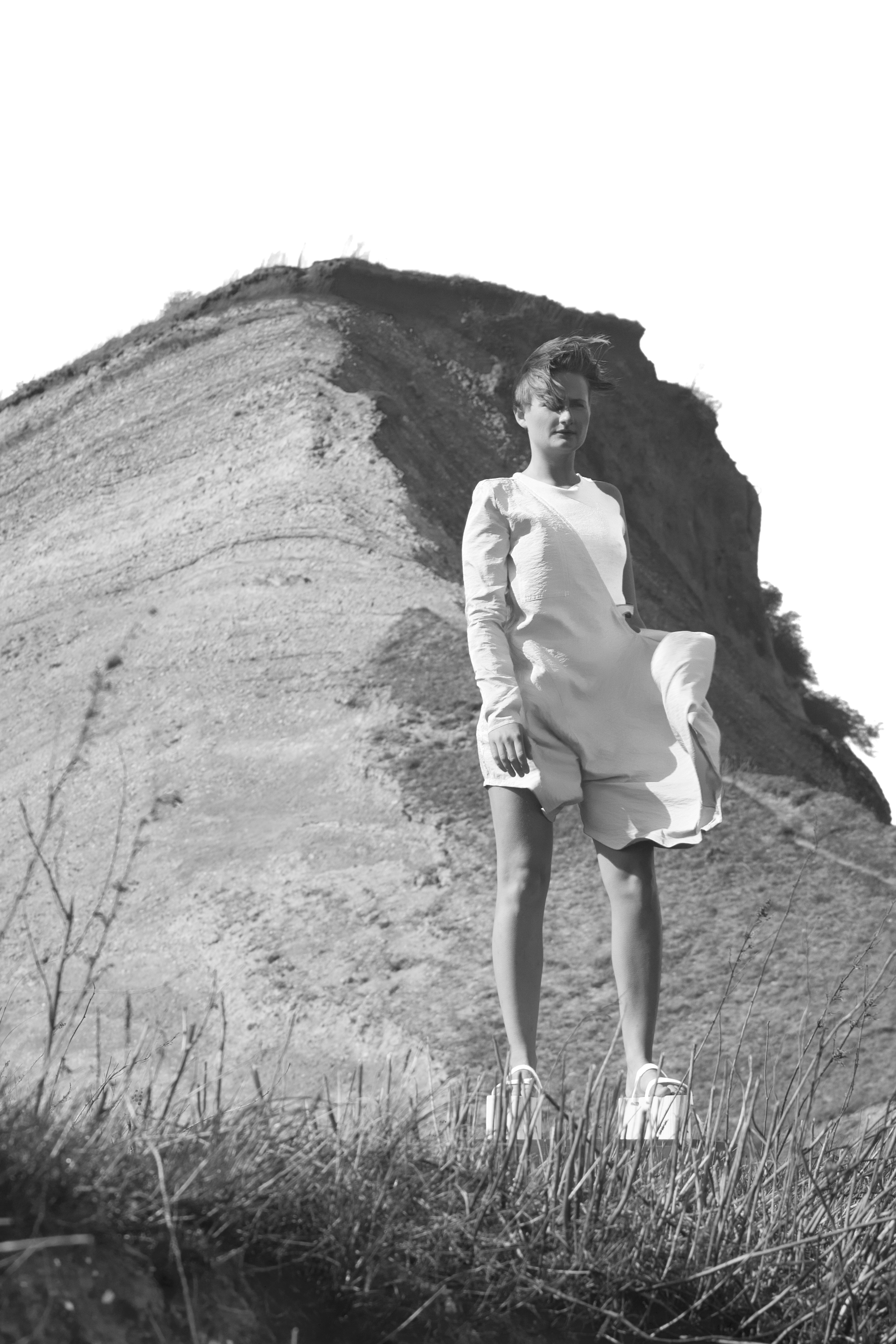by Lotus Ladegaard
Rave Review made its Copenhagen debut this cycle at the CPHFW. This relatively new brand was founded in 2017 by design duo Josephine Bergqvist and Livia Schück, who studied together and share a sense of fashion aesthetics that complement each other well. Their mission is to change the way we view fashion, raise awareness on consumption of fashion and the industry’s impact on the environment.
Rave Review has taken inspiration from Scarlet O’Hara’s amazing curtain dresses and focuses on remaking of home textiles such as plaids, blankets, curtains, and other nontraditional materials into high-end fashion pieces. They source their materials from second-hand shops and markets as well as searching the internet for interesting textiles. In many ways it is the most authentic sort of upcycling.
Rave Review’s AW20 collection was editorial, exciting, fresh and offered bold colour- and print combinations which is rare in Scandi-fashion. The colour palette was busy and featured a variety of prints and many different tartans.
The collection featured many showstoppers and standout looks such as the long dress with mixed prints in delicate blue and grey shades and busy brown floral prints. Another standout look was the crop top and slacks in mixed prints and tartan.
More subtle pieces like the black long-sleeved sweater with yellow trimmings styled with a pair of trousers in mixed fabrics and a stringy bright coloured clutch also made quite the impact.
The mixed tartan pieces were also crowd favourites and featured interesting details from streetwear such as the asymmetrical top in yellow and buff coloured tartans styled with a traditional Stewart and nontraditional tartan mix skirt with black trousers underneath.
Rave Review is an exciting new fashion brand with values most can relate to. They offer a bright and different perspective to the very minimalistic Nordic fashion scene. Their AW20 collection is bound to excite fashion editors and fashionistas alike. To do something well and do it within the means of one’s aesthetics is admirable and fortunately for us, Rave Review’s admirable philosophy also leads to some fantastic fashion.









